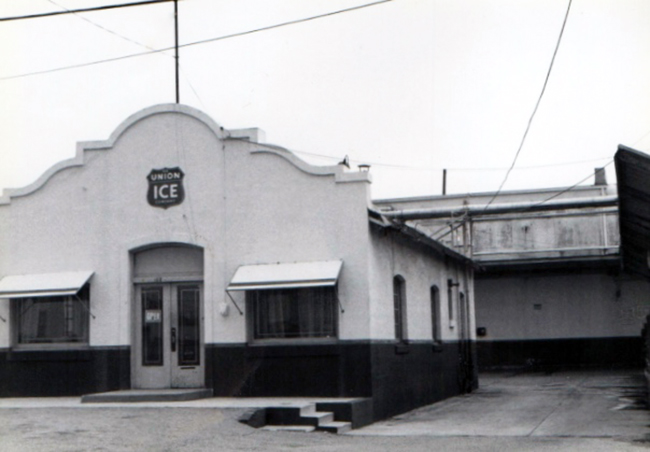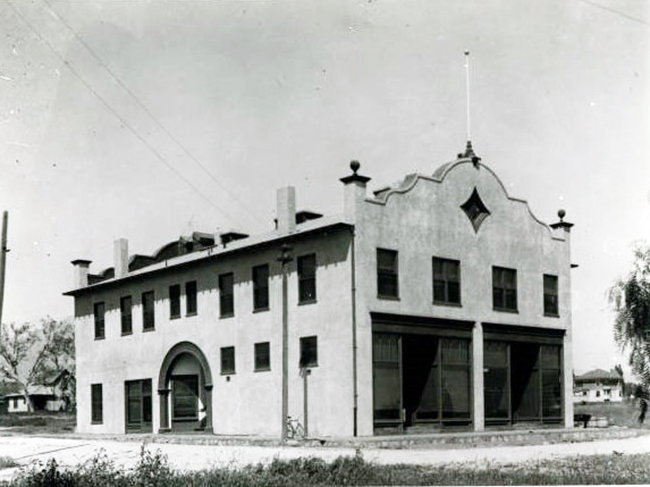Spring into preservation

Claremont National Bank, at the corner of Yale Avenue and Second Street, is seen here in an undated photo. It would become Bank of America, Claremont Pharmacy, then The Verbal Building, and in 1979, home to Pizza N’ Such. This landmark building in the Village lives on through generations and economic change. Photo/courtesy of Claremont Heritage
by John Neiuber | Special to the Courier
The days are getting longer. The elms on Indian Hill are beginning to leaf out, along with the sycamores in Memorial Park. Spring has arrived and with it the metaphors that the season promulgates.
Spring, a time of renewal, beginnings, and promise. It is so in almost every culture and religion. It is the stuff of poetry. Although the spring equinox was in March, April brings us Arbor Day and Earth Day. It does seem odd, however, that Tax Day should be in April. Wouldn’t the dead of winter be more appropriate and poetic?
On the 22nd of April we will celebrate Earth Day. Earth is a magnificent place, but our mother ship is having some difficulties. It is under attack from carbon emissions causing it to heat up and bringing climate change that is a threat to all aspects of life as we know it. What, you may be asking yourself, does this have to do with historic preservation?
According to the National Trust for Historic Preservation, the building sector is the biggest source of carbon emissions causing global warming. Worldwide, the construction and operation of buildings is responsible for 37% of all human-generated carbon emissions — more than the amount contributed by sectors such as transportation or industry. In the United States, the Energy Information Administration tracks energy use and other data for commercial and residential structures. This data shows building operations are responsible for 31% of total carbon emissions nationally.

The office of Union Ice Company, seen here in an undated photo, was saved from demolition during the development of Village West to become The Back Abbey, and connects us to our citrus past. Photo/courtesy of Claremont Heritage
Oftentimes, as an individual, combating climate change seems overwhelming. What can one person do? If we look at buildings differently, we can all make a difference. We can all embrace decarbonization that reduces or eliminates carbon emissions from the construction and operation of buildings. And as individuals, we can do something about the operation of our own home or business. That reduces the overwhelming burden of dealing with climate change.
The National Trust article, “Cutting Carbon: Resources for Preservationists,” by Jim Lindberg, identifies two types of carbon emissions from buildings: operational carbon emissions result from building occupancy and use — things such as heating, cooling, lighting, and equipment. Strategies to reduce operational carbon emissions include adding insulation, sealing the building envelope, converting to all-electric HVAC systems, and connecting to renewable energy sources.
For older and historic buildings, this means replacing old furnaces, boilers, water heaters, and stoves that burn gas or oil. Electric heat pumps are more efficient than traditional heating and cooling systems. Not widely known is that the 2022 Inflation Reduction Act includes incentives for property owners to insulate, electrify, and add renewable energy equipment to their buildings.
The second type, embodied carbon emissions, occur when the materials needed to construct and rehabilitate buildings are harvested, mined, manufactured, transported, and assembled. Strategies include different approaches to design, construction processes, use of low carbon materials, and adaptive reuse of existing buildings.
Preservation’s role in decarbonization is important. Lindberg points out that preservationists can effectively make the point that conserving, reusing, and retrofitting older and historic buildings can help address the urgent need to reduce CO2 emissions from the building sector. Simply put, it is impossible to build our way to net zero. Reusing existing buildings rather than replacing them avoids the carbon emissions that occur during new construction.
Research by the National Trust’s Preservation Green Lab found it can take between 10 and 80 years to overcome the carbon debt incurred when an existing structure is replaced, even if the new building is highly energy efficient.
Making older buildings more energy efficient is a key strategy in reducing energy generation, which in turn is key to decarbonization. Increasing insulation, improving the performance of historic windows and doors (see my February 2024 column, “Restore, don’t replace windows”), adding efficient new systems, and employing passive energy features are a few of the measures one can take with older buildings. Restoring and rehabilitating older buildings also promotes job growth because it is more labor intensive and less materials intensive.

This undated photo depicts the first two story commercial building in Claremont at the northeast corner of Yale Avenue and First Street, which has since been demolished. Photo/courtesy of Claremont Heritage
Historic preservation reduces the need to extract additional raw materials and the carbon expended by the extractions, transportations, and manufacturing of building products. The EPA estimates that construction waste accounts for 25 to 40 percent of solid waste going into landfills each year.
Historic preservation reuses existing raw materials and saves the original energy stored in the walls of the building. Existing infrastructure is reused, such as sewer systems, utility delivery systems, and transportation.
Historic preservation adaptively reuses a building for a purpose for which it was not originally designed. Warehouses become housing, breweries are turned into offices or retail, banks become restaurants, and packing houses become mixed-use developments.
The relationship of historic preservation and sustainability is succinctly expressed in the commonly quoted phrase, “The greenest building is the one that is already built.” Preservation is sustainability. Preserve, restore, reuse!









0 Comments